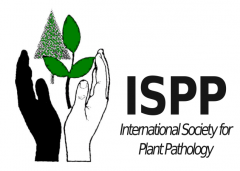FIRST REPORT OF LENTIL WILT CAUSED BY FUSARIUM NYGAMAI IN PAKISTAN
C.A. Rauf, K. Rafique, F. Naz, S. Kang
doi: 10.4454/jpp.v98i3.3768
Abstract:
During 2011-13, in the Layyah district of Punjab (Paki- stan), lentil (Lens culinaris Medikus) plants displayed wilt symptoms with about 42.5% incidence. The wilted lentils also showed yellowing, stunting, tissue discoloration and eventual death. Small surface disinfected root pieces from wilted plant samples were placed on potato dextrose agar (PDA) and incubated at 25 ± 2oC. Purified fungal colonies produced white fluffy mycelia and violet pigmentation. Macro-conidia (7.5-17 × 2-3 μm) were 3-septate, slender and straight with curved apical cell and foot-shaped basal cell. Micro-conidia (3-5 × 1.25-2.5 μm) were non-septate and oval, and formed in short chains or false heads on monophialides. Chlamydospores (6-11 μm) were intercalary, singles, in short chains or clusters. Morphologically, the fungus was iden- tified as F. nygamai Burgess & Trimboli (Leslie and Sum- merell, 2006). Sequences of 700 bp in the translation elon- gation factor-1α (TEF-1α) region, amplified using primers EF1/EF2 (Geiser et al., 2004), were deposited in GenBank (Accession Nos. KR061303 and KR061304). BLASTn analy- sis showed 99 to 100% identity with those from previously characterized F. nygamai strains (KP267250 in GenBank and AF160273 in Fusarium-ID). Roots of 15-days old lentil seed- lings (susceptible line NARC-08-1) were dipped in conidial suspension (1 × 107 conidia/ml) before potting them and kept in greenhouse at 25 ± 2oC. Inoculated plants developed wilt symptoms similar to those observed in the field, exhibiting 100% incidence and 60.74% severity index, and F. nygamai was re-isolated consistently from inoculated plants. Con- trol plants inoculated with sterile distilled water remained symptomless. To our knowledge, this is the first report of F. nygamai causing wilt disease on lentil in Pakistan.




